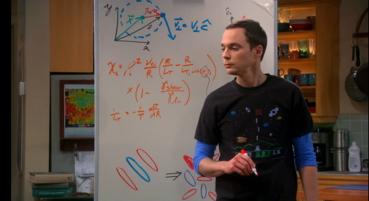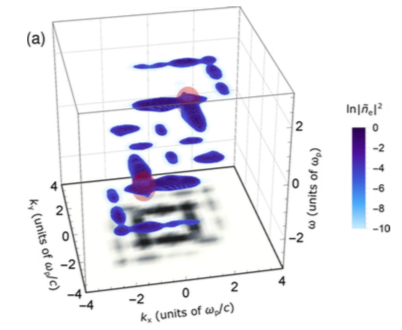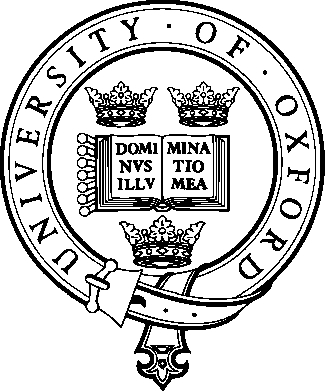
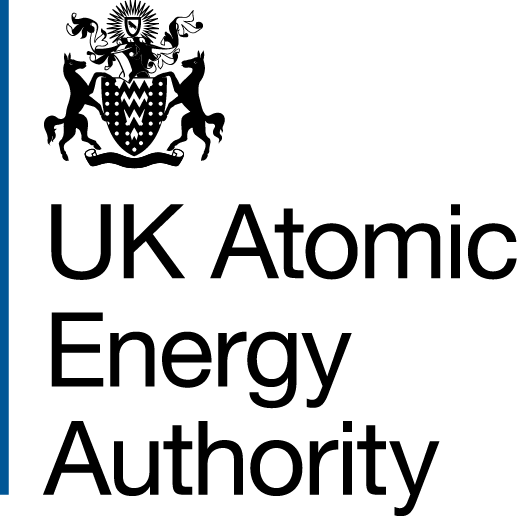
DPhil PROJECTS IN PLASMA PHYSICS
starting in October 2019
Application deadline: 25 January 2019
Oxford Plasma Theory Group welcomes applications for DPhil studies and research in plasma physics in the areas of magnetic confinement fusion (MCF) and plasma astrophysics (including "laboratory astrophysics")
Potential supervisors: Prof Michael Barnes (projects 1, 4), Prof Peter Norreys (project 3), Prof Felix Parra Diaz (project 2), Prof Alexander Schekochihin (projects 4, 5), Prof Gianluca Gregori (project 5)
Size of intake: this depends on various hard-to-predict circumstances, in particular funding arragements; we accepted 2 fully funded students in 2015, 4 in 2016, 3 in 2017, and 3 in 2018.
*** MORE NEW PROJECTS MAY APPEAR ON THIS PAGE IN DUE COURSE. COME BACK AND CHECK! ***
- If you are interested in MCF (either theoretical or experimental) or generally in plasma physics, apply for a DPhil in Theoretical Physics. Note that Theoretical Physics has three separate DPhil competitions: in particle theory, condensed matter and plasma physics. If you are willing to be considered for more than one of these topics, please state so explicitly in your application form.
- If you are interested in ICF or laboratory
astrophysics (projects with Prof Norreys and Prof Gregori), you may also apply
for a DPhil in Atomic & Laser
Physics.
- If you are interested in plasma astrophysics, apply for a DPhil in Astrophysics. For the plasma astrophysics (and lab astro) projects, we recommend (but do not require) that you also apply for a DPhil in Theoretical Physics (indicating plasma physics as your preferred area) as this will help us identify your application more quickly and consider you for all available projects and funding options across plasma physics. We recmmend applying to both degrees if you are generally interested in plasma physics and are flexible between its different areas.
- Internal
Oxford scholarships: there are a number of scholarships in
physics
available at Oxford, including Clarendon
Scholarships, the James
Buckee
Scholarship at Merton College, the
Oxford-Berman Studentship at University College, the MPLS Division
EPSRC Excellence Scholatships and others. Note that in order to be
considered for a scholarship
funded by a particular College, you do not need to select that College
as your College of first choice, but you must indicate on your
application form that you are willing to move to another College to
gain an offer of funding (this simply requires that you leave blank the
box in the funding section of the University’s online application form
that must be ticked if you do not wish to be considered by another
college than your stated preferred one). There is one (known to us)
exception to this principle: if you
are studying at a Swiss university, apply to Lincoln College to
be eligible for a Berrow
Foundation Scholarship. If you are from India (or certain other developing
countries), make sure to indicate on your application that you wish to
be considered for a Felix
Scholarship.
- Choice
of College:
you may apply to any College that accepts graduate applicants in
Physics. Choice of college can prove important for your life as a
graduate student: different colleges offer different levels of support
in terms of research funds, accommodation, social integration etc. We
therefore recommend that you do not
leave the college choice blank,
but do some research on which college suits you best. We are happy to
give informal advice on the matter. Here is the list of Colleges where
the faculty members offering plasma projects this year are Fellows: Merton (A.
Schekochihin), LMH (G.
Gregori), Univ
(M. Barnes and P. Norreys),
Worcester (F. Parra).
- If you are considering applying for an external scholarship and require our endorsement, in the first instance please contact the supervisor with whom you are most interested in working. Note the opportunities for Commonwealth Scholarships.
- You are welcome to address inquiries on science to any of the project supervisors listed below and on the logistical aspects of applying to Ms Michelle Bosher (but do please check first if your question is perhaps already answered here or here).
- All graduate students in plasma physics have access to graduate-level courses taught with the Oxford Master Course in Mathematical and Theoretical Physics (to which you can also apply as a stand-alone MSc degree) and the Oxford-Warwick-Imperial Centre for Postgraduate Training in Plasma Physics and High Energy Density Science.

Projects in Fusion Plasmas

Our magnetic-confinement-fusion theory projects (1 and 2) are offered jointly with researchers at the U.K.A.E.A. Culham Centre for Fusion Energy.
At the application stage, you are not required (although you may if you wish) to indicate which project you prefer --- we will consider all applicants purely on intellectual merit. If you are offered admission, we will strive to give you the opportunity to work on the project of your choice. Note that the project descriptions given below are not set in stone and we are willing to discuss modifications and adjustments to them that might better reflect your interests and inclinations.
1. Plasma
turbulence in 3D magnetic fields
Supervisor: Prof Michael Barnes
UKAEA co-supervisor: Dr Sarah Newton
Background Reading:
1. P. Helander, “Theory of plasma confinement in non-axisymmetric magnetic fields,” Rep. Prog. Phys. 77, 087001 (2014)
2. I. Abel et al., “Multiscale gyrokinetics for rotating tokamak plasmas: fluctuations, transport and energy flows,” Rep. Prog. Phys. 76, 116201 (2013)
2. Turbulence suppression in the edge of tokamaks
Supervisor: Prof Felix Parra Diaz
UKAEA co-supervisor: Dr Samuli Saarelma
3. Maximising plasma turbulence in the hot spot of inertial fusion targets
Supervisor: Prof Peter Norreys
(for this project, you may also apply for a DPhil in Atomic and Laser Physics)
Background Reading:
1. N. Ratan et al., “Dense plasma heating by crossing relativistic electron beams,” Phys. Rev. E 95, 013211 (2017)
2. R. Olson et al., “First liquid layer inertial confinement fusion implosions at the National Ignition Facility,” Phys. Rev. Lett. 117, 245001 (2016)
Supervisor: Prof Michael Barnes
UKAEA co-supervisor: Dr Sarah Newton
Background Reading:
1. P. Helander, “Theory of plasma confinement in non-axisymmetric magnetic fields,” Rep. Prog. Phys. 77, 087001 (2014)
2. I. Abel et al., “Multiscale gyrokinetics for rotating tokamak plasmas: fluctuations, transport and energy flows,” Rep. Prog. Phys. 76, 116201 (2013)
2. Turbulence suppression in the edge of tokamaks
Supervisor: Prof Felix Parra Diaz
UKAEA co-supervisor: Dr Samuli Saarelma
| If
sufficient power is injected into magnetically confined fusion plasmas,
a region of reduced turbulence develops near the walls that contain the
plasma. In this region, known as pedestal, the plasma gradients grow to
be large because they are not reduced by the turbulent fluctuations
that limit gradients elsewhere in the plasma. The pressure jump across
the pedestal improves the performance of fusion plasmas significantly.
Unfortunately, even though pedestals are robust experimental
observations, there is no quantitative model that can explain their
appearance and evolution. In this project, the student will develop an
analytical kinetic model to determine what effect stabilises the plasma
in the presence of large gradients that drive wild instabilities
elsewhere in the fusion device. Examples of the effects to be
considered are the interaction of the hot pedestal plasma with the much
colder plasma near the wall or the fact that typical particles can
sample a significant fraction of the pedestal width before they collide
or are affected by turbulent fluctuations. Background Reading: 1. J. W. Connor, “A review of models for ELMs,” Plasma Phys. Control. Fusion 40, 191 (1998) |
|

|
3. Maximising plasma turbulence in the hot spot of inertial fusion targets
Supervisor: Prof Peter Norreys
(for this project, you may also apply for a DPhil in Atomic and Laser Physics)
Background Reading:
1. N. Ratan et al., “Dense plasma heating by crossing relativistic electron beams,” Phys. Rev. E 95, 013211 (2017)
2. R. Olson et al., “First liquid layer inertial confinement fusion implosions at the National Ignition Facility,” Phys. Rev. Lett. 117, 245001 (2016)

Projects in Plasma Astrophysics
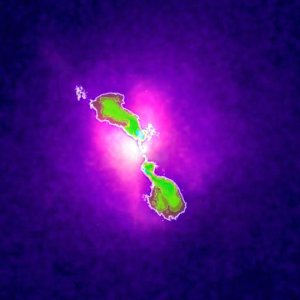
Candidates interested in any of these projects or generally in plasma astrophysics, astrophysical turbulence and/or dynamo theory are welcome to get in touch with prospective supervisors for further information. A more bespoke project can be designed to align with the inclinations and interests of the student (for example how much emphasis is placed on analytical vs. numerical methods or kinetic theory vs. fluid dynamics, etc., is negotiable).
4.
Free-energy flows in
turbulent astrophysical plasmas
Supervisors: Prof Michael Barnes and Prof Alexander Schekochihin
(for this project, you may also apply for a DPhil in Astrophysics)
In magnetised astrophysical plasmas, there is a turbulent cascade of electromagnetic fluctuations carrying free energy from large to small scales. The energy is typically extracted from large-scale sources (e.g., in the solar wind, the violent activity in the Sun’s corona; in accretion discs, the Keplerian shear flow; in galaxy clusters, outbursts from active galactic nuclei) and deposited into heat – the internal energy of ions and electrons. In order for this dissipation of energy to happen, the energy must reach small scales – in weakly collisional plasmas, these are small scales in the 6D kinetic phase space, i.e., what emerges are large spatial gradients of electric and magnetic fields and large gradients of the particle distribution functions with respect to velocities. This prompts two very intriguing questions: (1) how does the energy flow through the 6D phase space and what therefore is the structure of the fluctuations in this space: their spectra, phase-space correlation functions etc. (these fluctuations are best observed in the solar wind, but these days we can also measure density and magnetic fluctuations in galaxy clusters, via X-ray and radio observations); (2) when turbulent fluctuations are dissipated into particle heat, how is their energy partitioned between various species of particles that populate the plasma: electrons, bulk ions, minority ions, fast non-thermal particles (e.g., cosmic rays). The latter question is particularly important for extragalactic plasmas because all we can observe is radiation from the particles and knowing where the internal energy of each species came from is key to constructing and verifying theories both of turbulence and of macroscale dynamics and thermodynamics. This project has an analytical and a numerical dimension (which of these will dominate depends on the student’s inclinations). Analytically, we will work out a theory of phase space cascade at spatial scales between the ion and electron Larmor scales (we have done some preliminary work, so we know how to start off on this calculation, but obviously at some point we’ll be wading into unchartered waters). Numerically, we will simulate this cascade using “gyrokinetic” equations – an approach in which we average over the Larmor motion and calculate the distribution function of “Larmor rings of charge” rather than particles (this reduces the dimension of phase space to 5D, making theory more tractable and numerics more affordable).
Background Reading:
1. A. A. Schekochihin et al., “Astrophysical gyrokinetics: kinetic and fluid turbulent cascades in magnetized weakly collisional plasmas,” Astrophys. J. Suppl. 182, 310 (2009)
2. A. A. Schekochihin et al., “Phase mixing vs. nonlinear advection in drift-kinetic plasma turbulence,” J. Plasma Phys. 82, 905820212 (2016)
3. Y. Kawazura, M. Barnes, and A. A. Schekochihin, “Thermal disequilibration of ions and electrons by collisionless plasma turbulence,” arXiv:1807.07702
4. R. Meyrand, A. Kanekar, W. Dorland, and A. A. Schekochihin, “Fluidization of collisionless plasma turbulence,” arXiv:1808.04284
Supervisors: Prof Michael Barnes and Prof Alexander Schekochihin
(for this project, you may also apply for a DPhil in Astrophysics)
In magnetised astrophysical plasmas, there is a turbulent cascade of electromagnetic fluctuations carrying free energy from large to small scales. The energy is typically extracted from large-scale sources (e.g., in the solar wind, the violent activity in the Sun’s corona; in accretion discs, the Keplerian shear flow; in galaxy clusters, outbursts from active galactic nuclei) and deposited into heat – the internal energy of ions and electrons. In order for this dissipation of energy to happen, the energy must reach small scales – in weakly collisional plasmas, these are small scales in the 6D kinetic phase space, i.e., what emerges are large spatial gradients of electric and magnetic fields and large gradients of the particle distribution functions with respect to velocities. This prompts two very intriguing questions: (1) how does the energy flow through the 6D phase space and what therefore is the structure of the fluctuations in this space: their spectra, phase-space correlation functions etc. (these fluctuations are best observed in the solar wind, but these days we can also measure density and magnetic fluctuations in galaxy clusters, via X-ray and radio observations); (2) when turbulent fluctuations are dissipated into particle heat, how is their energy partitioned between various species of particles that populate the plasma: electrons, bulk ions, minority ions, fast non-thermal particles (e.g., cosmic rays). The latter question is particularly important for extragalactic plasmas because all we can observe is radiation from the particles and knowing where the internal energy of each species came from is key to constructing and verifying theories both of turbulence and of macroscale dynamics and thermodynamics. This project has an analytical and a numerical dimension (which of these will dominate depends on the student’s inclinations). Analytically, we will work out a theory of phase space cascade at spatial scales between the ion and electron Larmor scales (we have done some preliminary work, so we know how to start off on this calculation, but obviously at some point we’ll be wading into unchartered waters). Numerically, we will simulate this cascade using “gyrokinetic” equations – an approach in which we average over the Larmor motion and calculate the distribution function of “Larmor rings of charge” rather than particles (this reduces the dimension of phase space to 5D, making theory more tractable and numerics more affordable).
Background Reading:
1. A. A. Schekochihin et al., “Astrophysical gyrokinetics: kinetic and fluid turbulent cascades in magnetized weakly collisional plasmas,” Astrophys. J. Suppl. 182, 310 (2009)
2. A. A. Schekochihin et al., “Phase mixing vs. nonlinear advection in drift-kinetic plasma turbulence,” J. Plasma Phys. 82, 905820212 (2016)
3. Y. Kawazura, M. Barnes, and A. A. Schekochihin, “Thermal disequilibration of ions and electrons by collisionless plasma turbulence,” arXiv:1807.07702
4. R. Meyrand, A. Kanekar, W. Dorland, and A. A. Schekochihin, “Fluidization of collisionless plasma turbulence,” arXiv:1808.04284
5. Magnetised
plasma turbulence: from laser lab to galaxy clusters
Supervisors: Prof Gianluca Gregori and Prof Alexander Schekochihin
(for this project, you may also apply for a DPhil in Atomic and Laser Physics)
Supervisors: Prof Gianluca Gregori and Prof Alexander Schekochihin
(for this project, you may also apply for a DPhil in Atomic and Laser Physics)
There are a number of
possibilities within this project to design, take part in and theorise
about laboratory experiments employing laser-produced plasmas to model
astrophysical phenomena and basic, fundamental physical processes in
turbulent plasmas. Recent examples of our work in this field include
turbulent generation of magnetic fields ("dynamo") [1,2], supersonic
turbulence mimicking star-forming molecular clouds, diffusion and
acceleration of particles by turbulence [3,4]. Our group has access to
several laser facilities (including the National Ignition Facility, the
largest laser system in the world). Students will also have access to a
laser laboratory on campus, where initial experiments can be fielded.
Background Reading:
1. G. Gregori et al., “The generation and amplification of intergalactic magnetic fields in analogue laboratory experiments with high power lasers,” Phys. Reports 601, 1 (2015)
2. P. Tzeferacos et al., “Laboratory evidence of dynamo amplification of magnetic fields in a turbulent plasma,” Nature Comm. 9, 591 (2018)
3. A. F. A. Bott et al., “Proton imaging of stochastic magnetic fields,” J. Plasma Phys. 83, 905830614 (2017)
4. L. E. Chen et al., “Stochastic transport of high-energy particles through a turbulent plasma,” arXiv:1808.04430
1. G. Gregori et al., “The generation and amplification of intergalactic magnetic fields in analogue laboratory experiments with high power lasers,” Phys. Reports 601, 1 (2015)
2. P. Tzeferacos et al., “Laboratory evidence of dynamo amplification of magnetic fields in a turbulent plasma,” Nature Comm. 9, 591 (2018)
3. A. F. A. Bott et al., “Proton imaging of stochastic magnetic fields,” J. Plasma Phys. 83, 905830614 (2017)
4. L. E. Chen et al., “Stochastic transport of high-energy particles through a turbulent plasma,” arXiv:1808.04430
